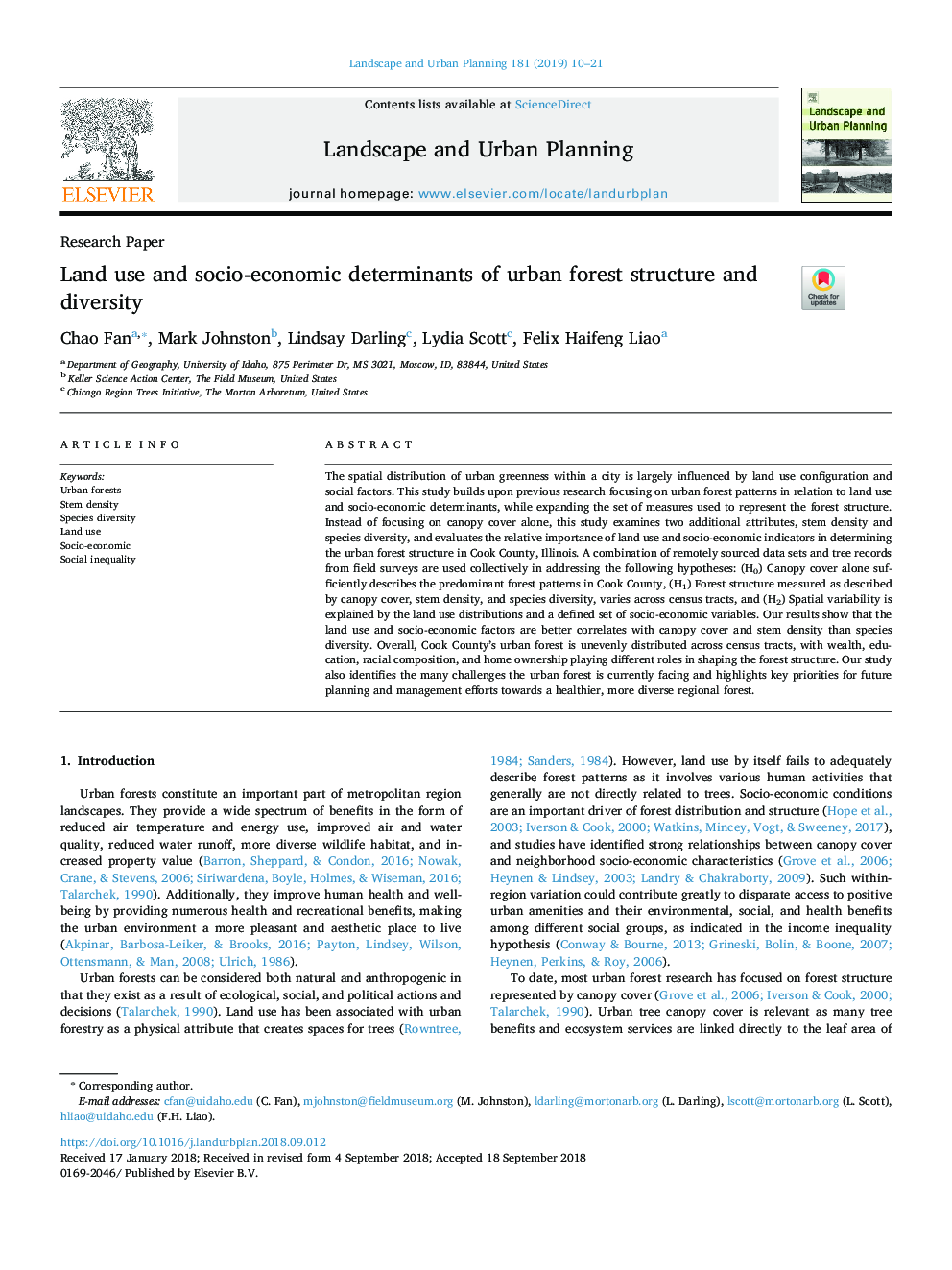| Article ID | Journal | Published Year | Pages | File Type |
|---|---|---|---|---|
| 11020391 | Landscape and Urban Planning | 2019 | 12 Pages |
Abstract
The spatial distribution of urban greenness within a city is largely influenced by land use configuration and social factors. This study builds upon previous research focusing on urban forest patterns in relation to land use and socio-economic determinants, while expanding the set of measures used to represent the forest structure. Instead of focusing on canopy cover alone, this study examines two additional attributes, stem density and species diversity, and evaluates the relative importance of land use and socio-economic indicators in determining the urban forest structure in Cook County, Illinois. A combination of remotely sourced data sets and tree records from field surveys are used collectively in addressing the following hypotheses: (H0) Canopy cover alone sufficiently describes the predominant forest patterns in Cook County, (H1) Forest structure measured as described by canopy cover, stem density, and species diversity, varies across census tracts, and (H2) Spatial variability is explained by the land use distributions and a defined set of socio-economic variables. Our results show that the land use and socio-economic factors are better correlates with canopy cover and stem density than species diversity. Overall, Cook County's urban forest is unevenly distributed across census tracts, with wealth, education, racial composition, and home ownership playing different roles in shaping the forest structure. Our study also identifies the many challenges the urban forest is currently facing and highlights key priorities for future planning and management efforts towards a healthier, more diverse regional forest.
Related Topics
Life Sciences
Agricultural and Biological Sciences
Ecology, Evolution, Behavior and Systematics
Authors
Chao Fan, Mark Johnston, Lindsay Darling, Lydia Scott, Felix Haifeng Liao,
